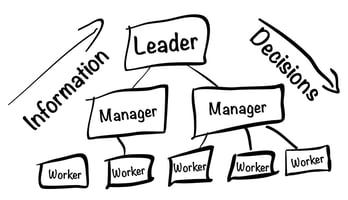Are we done transforming and when can we get back to work?
Leading transformative change
Whether it’s “Agile,” “Product,” “Digital,” or “SAFe,” leaders are often put in a position to transform their organizations into something else. It’s difficult and puts unique pressure on leaders.
Most transformations fail
Let’s get it out of the way, so we’re not pretending: the vast majority of transformation efforts fail. It’s something I address with potential clients before we start, so that we’re on the same page about what needs to happen, the challenges involved, and how to avoid common pitfalls.
Central to the reason most transformations fail is that businesses are not built to transform. They were built and staffed to operate efficiently, and transformation is definitely not an efficient process. Leaders are often put into their roles because they were good at doing things the “old“ way, and they may not be comfortable doing them the “new” way. It’s important for everyone involved to be ready to handle the challenges of people not fitting in with the new way of doing things. If the transformation is to succeed, these challenges to be recognized and dealt with quickly and effectively.
The change is the challenge
For leaders who are new in role, the transformation may be the first major restructuring that they’ve been a part of. Understanding how the new organization functions, and how people and process and work are going to move from the old way to the new way may represent a novel challenge. Helping them come to terms with the turmoil created can be critical to continuing the momentum of the transformation.
Renegotiating interactions with other business units, understanding the impact on budgets, schedules, and people will determine how successful each group is throughout the process. working with outside experts who have seen other organizations attempt to make the leap and can support leaders can drastically improve the outcome. In practice, this manifests in two ways: helping people with the technical aspects of the transformation (e.g., budgeting, organization structure, team composition, planning, executing, and communicating) and with the emotional impact of the changes (e.g., fear of failure, returning to what’s most comfortable, conflict management). Too often leaders focus on the former and give short thrift to the latter, and that’s a major contributor to the failure of many transformation efforts.
One of the many things I love about coaching through tranformation is helping people learn how to be successful in the new organization, and to appreciate what it has to offer them and their teams. All transformations are difficult because at its core change is difficult; effective organizations support people through those challenges with a combination of knowledge and empathy.


